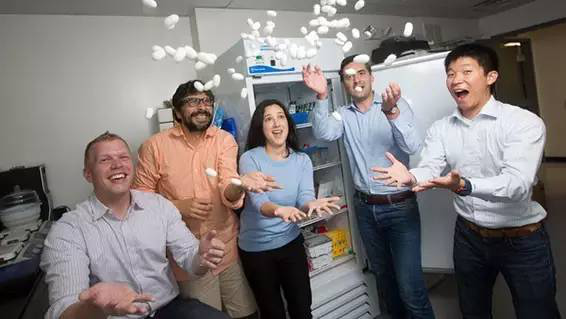The weapon to end the cold chain transport of blood and vaccine may be silkworm
June 12, 2016 Source: Singularity Network
Window._bd_share_config={ "common":{ "bdSnsKey":{ },"bdText":"","bdMini":"2","bdMiniList":false,"bdPic":"","bdStyle":" 0","bdSize":"16"},"share":{ }};with(document)0[(getElementsByTagName('head')[0]||body).appendChild(createElement('script')) .src='http://bdimg.share.baidu.com/static/api/js/share.js?v=89860593.js?cdnversion='+~(-new Date()/36e5)];In March of this year, the "Shandong Vaccine Invalidation" incident sensationalized the country. The illicit vaccine worth 570 million yuan without strict cold chain storage and transportation flowed into 24 provinces and cities nationwide. At one time, the whole country was upset. Because the vaccine is very sensitive to temperature, from manufacturing to use, every part of the process has the possibility of failure due to temperature rise, so this has become a major threat to vaccine safety.
An unexpected technology from the American startup Vaxess has solved this problem, and moms no longer have to worry about the baby getting a vaccine that is ineffective due to high temperatures! They use silk protein extracted from silk, and the protein solution is added to the vaccine. After mixing and drying, the vaccine can be kept stable at room temperature or higher and maintain its heat resistance for a long period of time. That is to say, the vaccine thus preserved does not need to be refrigerated during transportation.

The holder of this technology is Professor David Kaplan, a scientific consultant at Vaxess, who is from the famous Tufts University in the United States. Another J. Dr. Jonathan Kluge, also from Tufts University, also used silk fibroin to conduct a study to achieve the preservation of blood samples at room temperature. The results of this research were also published in PNAS (Proceedings of the National Academy of Sciences). .
We know that blood samples taken during blood tests also need to be cryopreserved. The diagnosis of diseases depends mainly on certain proteins in the blood. In the presence of diseases, the content of protein markers in the blood changes. But once the blood is out of the body, these proteins are hard to find and recognize, because the enzymes in the blood degrade it, or when the temperature rises, the proteins are thermally denatured. And low temperature can effectively slow down this process.

Dr. Kluge's research allows doctors to collect blood samples from patients' homes without worrying about storage conditions and, more importantly, for people in remote rural areas who are more likely to get more accurate. diagnostic result.
Why do you say that? Because the low temperature preservation condition is difficult to achieve in some rural areas without reliable power security. And another problem with the "dry blood test" that seems to make up for this problem is that after the sample returns to the laboratory, there is often not enough blood available for analysis. In addition, the problem of storage temperature has not been solved, and some molecules in the blood are still difficult to preserve. Therefore, most laboratories are willing to use direct blood refrigeration.
Therefore, the method of "using silk to preserve blood samples" is very necessary and urgent. The Kluge team of researchers mixed the silk with the blood and dried it to simulate a high-temperature storage environment. The final experimental results showed that almost all proteins could be extracted from the blood "protected" by the silk, compared to the previously mentioned frozen blood sample method and dried. The blood method is more reliable. Experiments have shown that after drying, silk can provide a "protective barrier" to the blood, physically fix the blood components, minimize the residual moisture content, thereby increasing the conformational stability of the blood components, and also preventing protein exposure to enzymes and ultraviolet light.

Dry silk fixed blood schematic
In addition to being a scholar at Tufts University, Dr. Kluge is also the head of research and development at Vaxess. Vaxess's main research object is silk fibroin. Silk fibroin is stable in nature and has high biocompatibility. The company's core technology is to use its unique structural and functional properties to improve medical diagnostic and therapeutic products.
Nowadays, the technique of using silk to preserve blood samples has also been included in the research of Vaxess, although it is currently only successful in the laboratory, and in the future practical applications, it will face the complexity of moisture, dust and so on. The impact, but Professor Kaplan said that "the commercialization of silk blood tests is already on the road, and the deal will come soon."
Once the silk blood test model is commercialized, the advantages of low cost and storage and transportation at normal temperature and even high temperature, there is a great market demand for many outsourcing third-party inspection agencies. If it can be successfully launched, it will undoubtedly become a dark horse to change the blood testing industry.
Antipyretic & Analgesic,Paracetamol Injection,Injection For Antipyretic,Injection For Analgesic
Shandong Qidu Pharmaceutical Co., Ltd. , https://www.qdyypharma.com